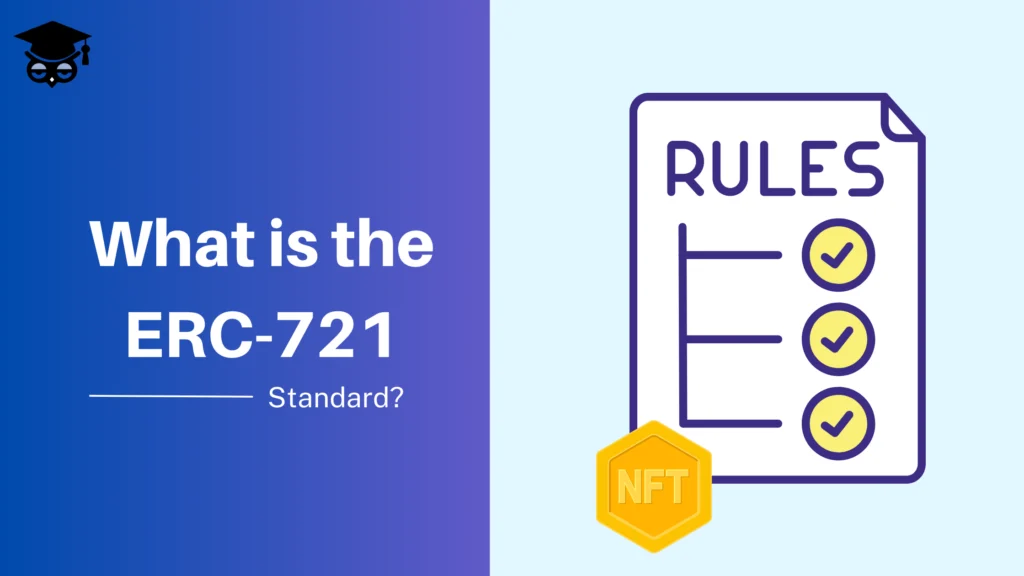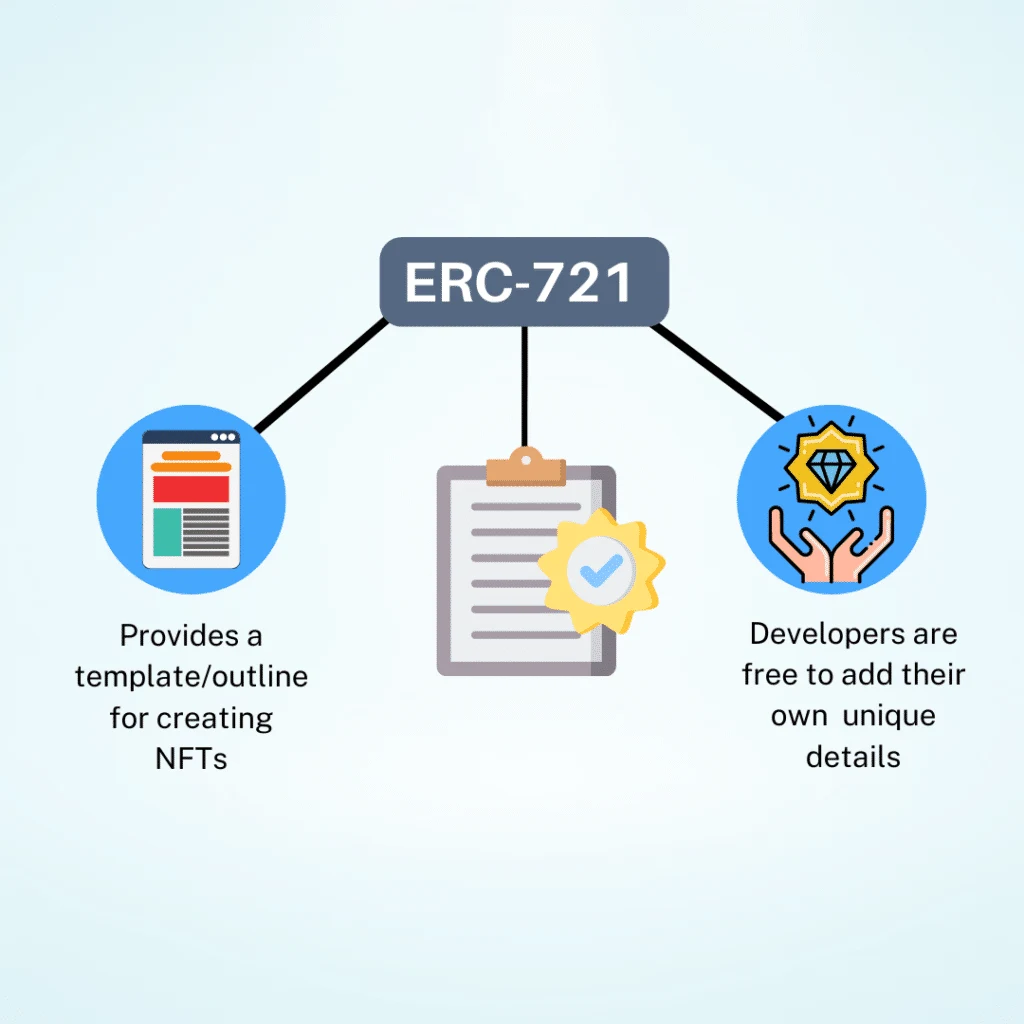What is ERC-721?
ERC-721 is a standard for non-fungible tokens (NFTs) on the Ethereum blockchain. Ethereum standards contain specifications for creating specific types of tokens.
The Long. Definition
ERC-721, or Ethereum Request for Comments 721, is a token standard that defines the rules for creating non-fungible tokens (NFTs) on Ethereum.
NFTs are unique tokens on a blockchain(s). Each ERC-721 token is not directly interchangeable with another ERC-721 token, hence the term non-fungible.

History of ERC-721
The ERC-721 standard was first proposed by Dieter Shirley, William Entriken, Nastassia Sachs, and Jacob Evans. It was submitted as an Ethereum Improvement Proposal (EIP) in January 2018 for review by the community. It would then be accepted as a standard only a few months later in June. Since then, NFT projects on Ethereum use the ERC-721 standard
Note that ERC-721 was already in use before its status on Ethereum was finalized. CryptoKitties, one of the earliest NFT projects, used the beta version of the standard. It was launched in November 2017 and, by December, it had become so popular that it congested the Ethereum network.
How Does it Work?
ERC-721 provides a template for developers to use when creating non-fungible tokens. A token can be defined as a smart contract on Ethereum. For it to be considered an ERC-721 token, the code must implement methods and events outlined by this standard.
Methods and events, in this case, are programmed procedures. A few of those laid out by ERC-721 include:
- balanceOf to show the balance
- safeTransferFrom to execute transfers from a specified address
- ownerOf to show the owner’s address
- Approve for withdrawals from a specified account.
Note that ERC-721 doesn’t dictate every single characteristic of a token. It only provides a basic outline for developers to follow. Once that’s done, the developer is free to add their unique details and program unique functionalities to their NFTs.

Why is it Important?
ERC-721 provides a format for writing NFT smart contracts. This ensures some level of compatibility across different platforms. It also makes the process of creating NFTs easy and predictable for developers, even for those who haven’t done so before.
Note that ERC-721 isn’t compulsory. If you’re creating an NFT, you still have the option of following another standard or creating your own. However, most projects voluntarily use this standard. Following it ensures the token is compatible with a wide variety of applications on the Ethereum blockchain.
Other Token Standards
The Ethereum blockchain is home to other standards. These include:
ERC-20
ERC-20 is the ruleset for creating fungible tokens. These are non-unique tokens that can be exchanged directly for one another. Examples include Tether (USDT), DAI, and USD Coin (USDC).
ERC-1155
ERC-1155 is a multi-token standard. It provides the template for creating any number of fungible and non-fungible tokens. That way, developers don’t have to deploy a separate smart contract for each token type or collection.
ERC-777
ERC-777 is another technical standard for fungible tokens. It presents itself as an alternative to the ERC-20 standard. Additionally, tokens created with ERC-777 are backward compatible with ERC-20.
ERC-4626
ERC-4626 is the technical standard for vaults. A vault is a yield-bearing smart contract. It holds crypto assets and does something with them in order to generate yield. This yield is then paid to the asset’s owners.
